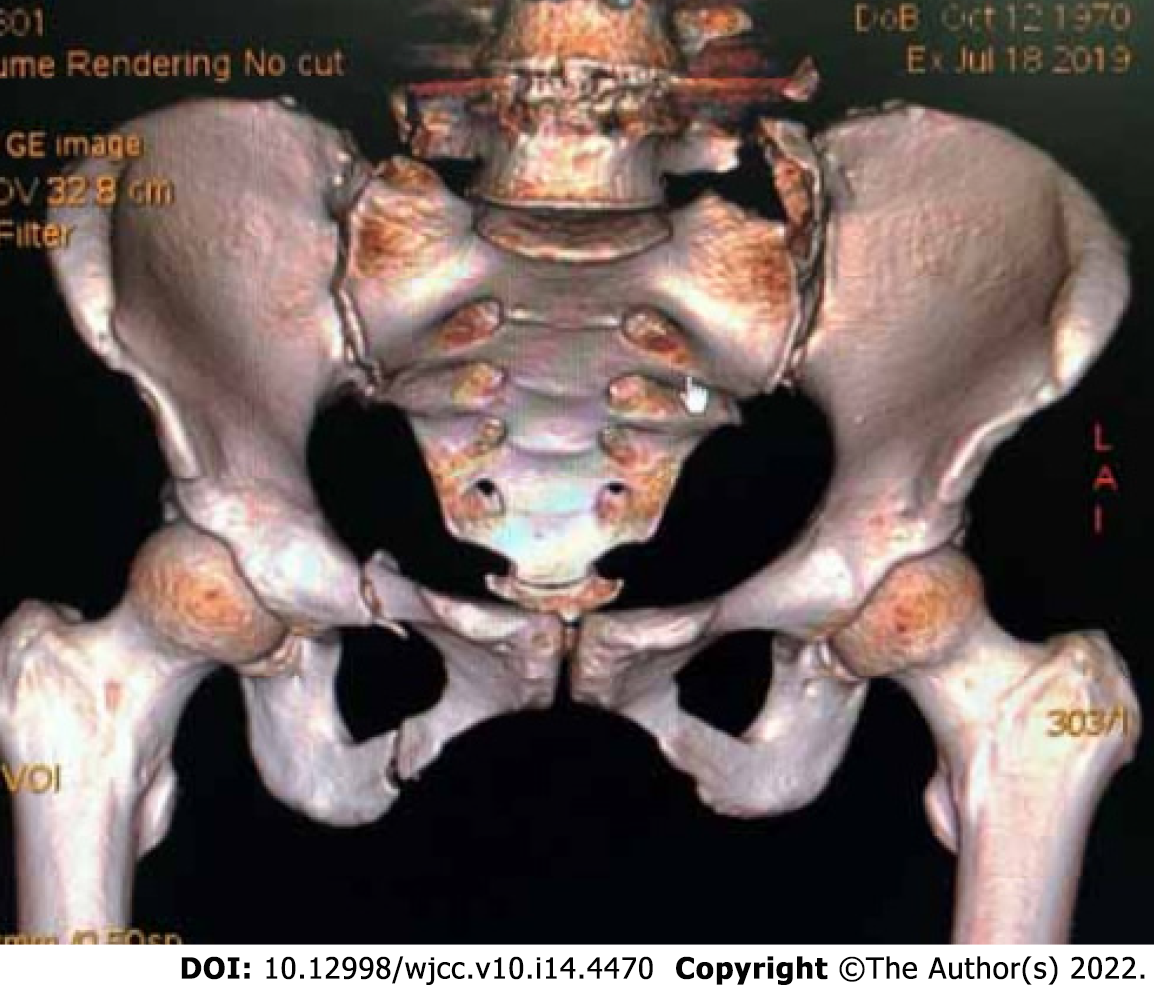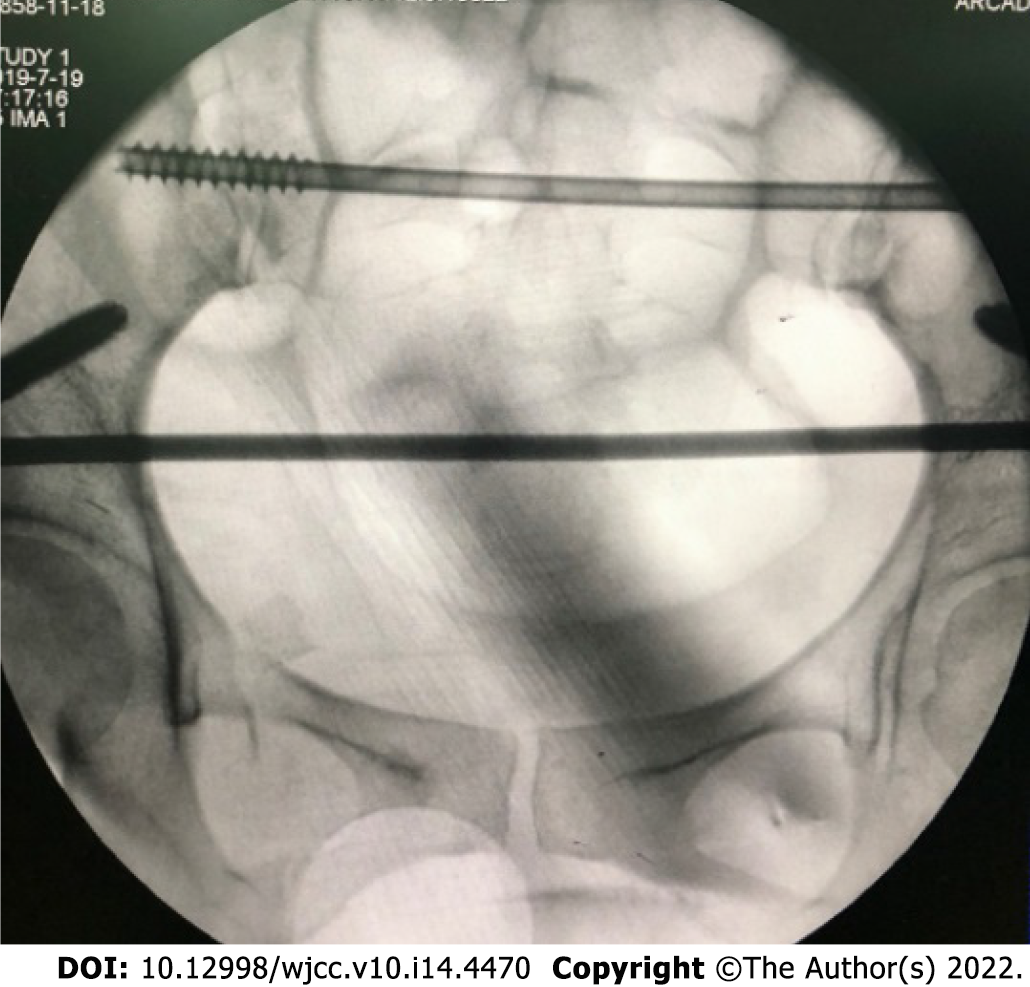Copyright
©The Author(s) 2022.
World J Clin Cases. May 16, 2022; 10(14): 4470-4479
Published online May 16, 2022. doi: 10.12998/wjcc.v10.i14.4470
Published online May 16, 2022. doi: 10.12998/wjcc.v10.i14.4470
Figure 1 Preoperative pelvic radiography.
A, B: Pelvic X-ray (A) and multi-slice computed tomography scan (B) used to observe the fracture.
Figure 2 Preoperative pelvic computed tomography.
A, B: Multi-planar reconstruction, volume rendering, and maximum intensity projection were performed of the original image data of multi-slice spiral computed tomography scan to create each multi-planar three-dimensional reconstructed image.
Figure 3 Preoperative three-dimensional reconstruction image.
The three-dimensional (3D) surgical simulation was the construction of 3D reconstructed images by X-ray and multi-slice spiral computed tomography.
Figure 4 Intraoperative fluoroscopy image.
The image showing minimally invasive fixation with hollow lag screws.
Figure 5 Postoperative pelvic X-ray images.
A, B: Pelvic X-ray (A) and multi-slice spiral computed tomography scan (B) were used to observe the pelvic reduction at 3 mo postoperative.
- Citation: Huang JG, Zhang ZY, Li L, Liu GB, Li X. Multi-slice spiral computed tomography in diagnosing unstable pelvic fractures in elderly and effect of less invasive stabilization. World J Clin Cases 2022; 10(14): 4470-4479
- URL: https://www.wjgnet.com/2307-8960/full/v10/i14/4470.htm
- DOI: https://dx.doi.org/10.12998/wjcc.v10.i14.4470













